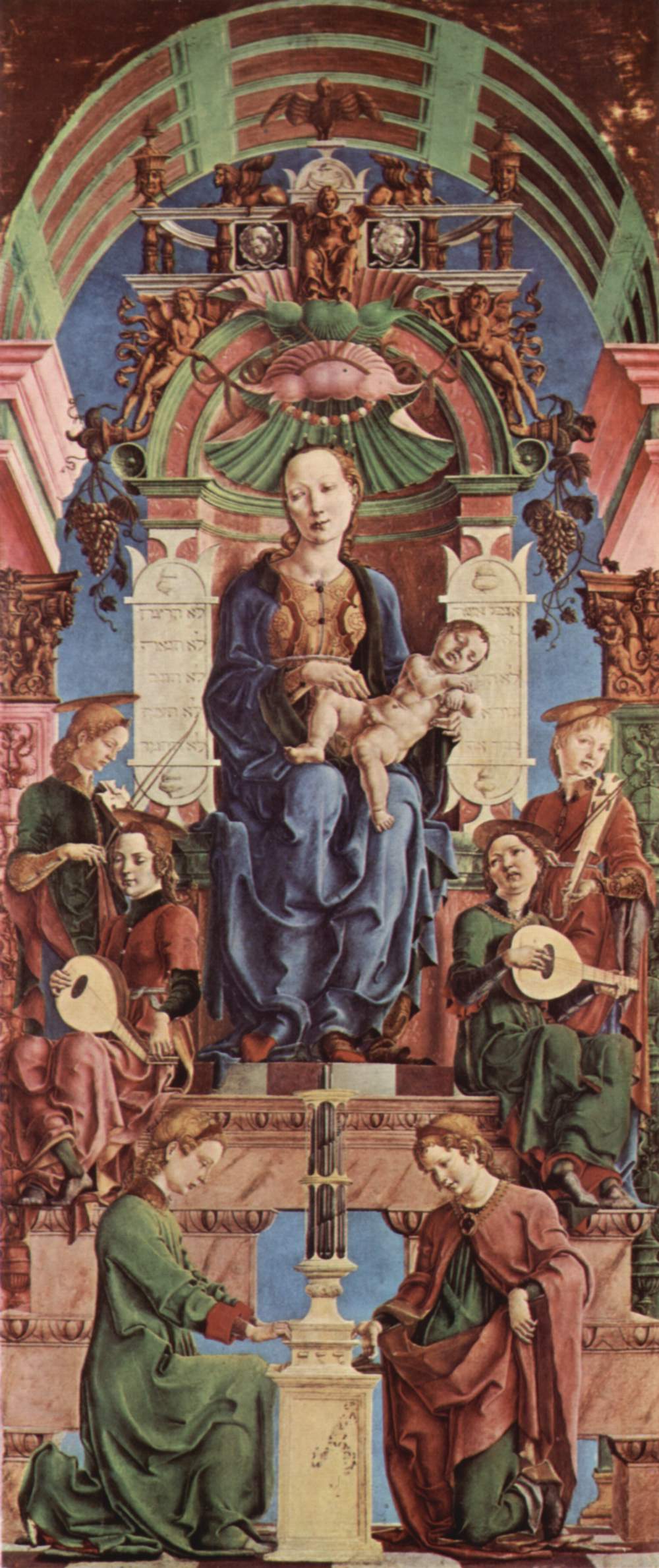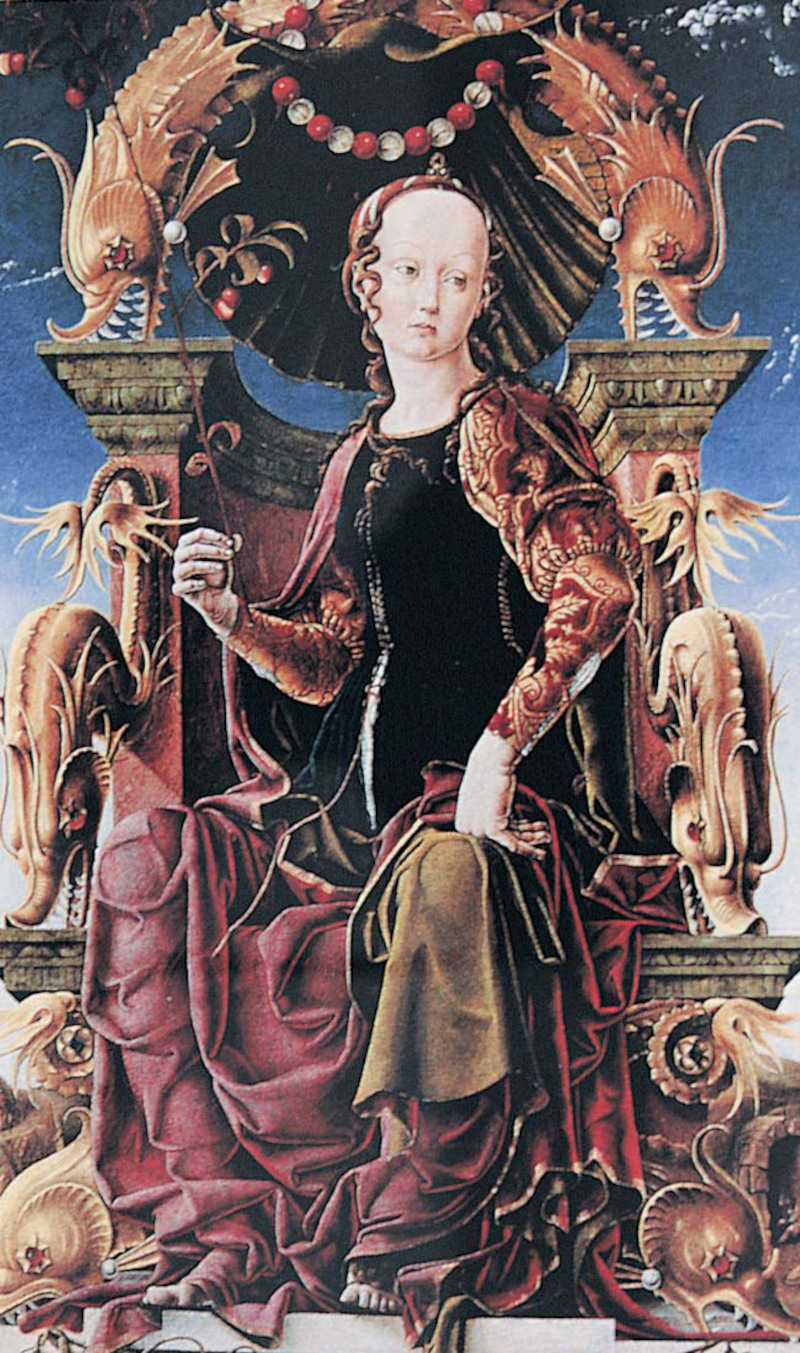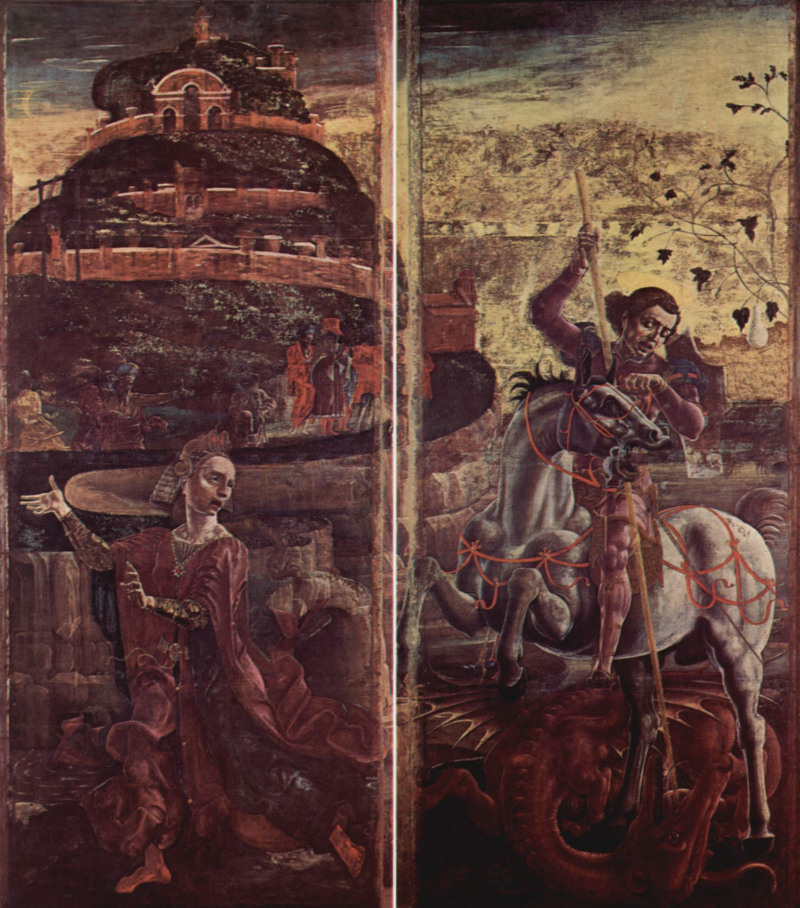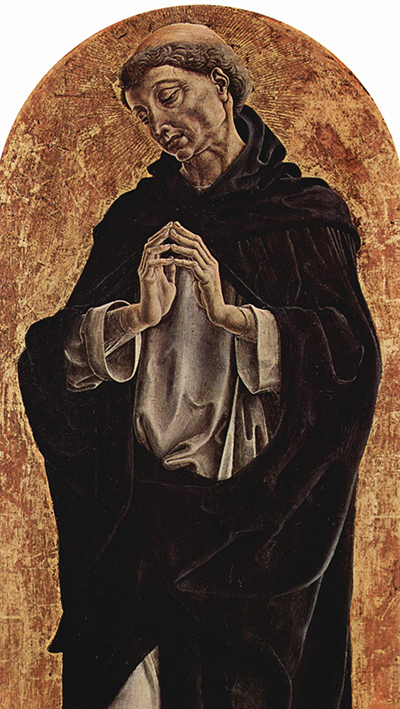Cosimo Tura, also known as Cosmè Tura, was an important member of the Ferrara School and impressed in the mid to late 15th century.
Whilst there are gaps in our historical knowledge of his career, it is likely that he would have been apprenticed to a local artist in Ferrara, though the precise identity of this master is unknown. Fleeting documentation exists on his early life and career, with attributions to small projects in and around Ferrara as he started to build his reputation.
We do know that he was working as a professional artist from his early twenties, and was already connected to the Este court, which may have provided considerable opportunities to him. It is likely then that the artist spent several years elsewhere in Italy, seeking to spread his reputation and also evolve his work, taking in new influences from other Italian schools of art. It is believed that Andrea Mantegna and Piero della Francesca may have been an influence on him during this period.
By his mid twenties, the artist would return to Ferrara and become a salaried artist, providing regular projects and financial stability. He served Borso d'Este and Ercole I d'Este for the majority of the rest of his life but sadly never particularly profited from his work, despite its success.
Early Life
We know that the artist was born to a shoemaker, but little else is known until his first artistic commissions appeared in around the early 1450s, by which time he would have been in his early twenties. He was born and bred in Ferrara, and therefore perfectly placed to join the art school which was already established in the town. Despite several trips around the country as he sought to spread his artistic knowledge, he would return and spend most of his life working in his beloved hometown.
Style
Cosimo Tura's artistic style was certainly unique, particularly within Ferrara at that time. He adorned his paintings with incredible detail, and particularly loved to feature elements of architecture in a sculptured manner which allowed them to rise from the panel on which they lay. Some of his details were so imaginative that they helped to create fantastical imagery within his more complex works.
Working as Court Painter for the Este Family
As court painter, Cosimo would work under Borso d'Este, and then Ercole I, with the change occurring in around 1471. Both roles offered him a good salary and a regular flow of work, often on prestigious projects. Whilst he would lose some of his ability for creativity, he was respected enough to work with a certain degree of artistic license. At that time, artists were at the mercy of their donors, and so he would have been very grateful for this opportunity.
Ferrara School of Painting
The Este family ruled over the entire Duchy of Ferrara right across the Renaissance and were passionate about the arts in a similar vein to how we remember the Medicis. To gain favour with them, just as Cosimo Tura was able to do, was crucial to achieving success for any artist in this Italian region. Besides painting, the school also impressed with engraving too, and would continue until around the 18th century, at which point its influence and innovations drifted away.
Cosimo Tura Gallery

Madonna Roverella

An Allegorical Figure of Calliope

St George and the Dragon
Major Artworks
Palazzo Schifanoia Frescoes
The artist collaborated with Francesco del Cossa and Ercole de' Roberti to fill the walls of Palazzo Schifanoia with life and color, through a series of complex frescos. The paintings fitted within a set narrative focused on the zodiac, and covered a number of different rooms making this one of the largest projects that he worked on. As residence to the Este family, it also showed the trust that they were now affording him.
St George and the Dragon
St George was a single section to a larger project known as Roverella Altarpiece which was eventually separated into different parts. The artist also produced a scene known as St George and the Dragon which decorated the Ferrara Cathedral Organ Case, covering one of the doors. The latter is believed to have been influenced by the likes of Mantegna and Piero della Francesca, as well as the international Gothic movement which had some stylistic connection to the Ferrara School.
 St George and the Dragon
St George and the Dragon
Influences on the Artist
Leon Battista Alberti is believed to have influenced Cosimo Tura's mindset as an artist, despite himself not specialising in painting. Alberti wrote about artistic theories and also worked as an architect, both fields of which would inspire Tura, as shown in his inclusion of architectural features across the backgrounds of many of his paintings.
Aside from Alberti, Tura also gained much from his time in the Ferrara School, and by extension, north European art. The Ferrara School had long since held a connection to this part of the continent, and that perhaps explains why it also achieved much in the field of engraving too. As court painter, the artist would also have mixed with the finest artists that Ferrara had to offer, and be able to exchange ideas over a period of many decades.
Legacy
One of the biggest legacies left by Cosimo Tura is in how he merged elements of north European art with Italian art. He also incorporated elements of architecture into his scenes with great precision and detail. Most of his work was focused on religious content and he helped to further establish the Renaissance as the finest period for this genre, as well as promoting the Ferrara School more specifically.
Conclusion
We can conclude that Cosimo Tura was an important member of the Ferrara School, and whilst being lesser known today than many other Renaissance arists, his work was both imaginative and unique. He also left a strong legacy which did influence later generations of artists, particularly within the area of architectural features within the painting medium. His strongest influence was within the religious art genre, as this was his main focus right across his time working as court painter to the Este family.




